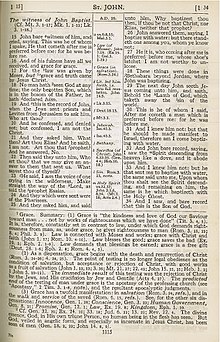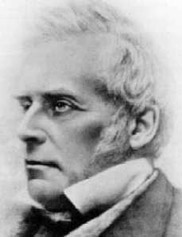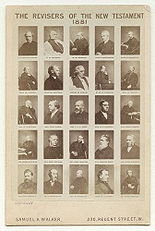Old and newer King James Versions and other translations #5 Further steps to women’s bibles
In the Wild West women took care their children got a knowledge of the Word of God. In the growing states of the New World the oral tradition of the Word of God ensured the Gospel-readings spreading.
For millennia prior to the invention of writing, which is a very recent phenomenon in the history of humankind, oral tradition served as the sole means of communication available for forming and maintaining societies and their institutions. Moreover, numerous studies — conducted on six continents — have illustrated that oral tradition remains the dominant mode of communication in the 21st century, despite increasing rates of literacy. {Encyclopaedia Britannica}
The States got some very strong ladies, creating schools and congregations where women told in their own words what was written in the Holy Scriptures. In the early nineteenth century, at the European continent and in the colonies where the largest, most influential churches like Catholics and Church of England reigned, they like Presbyterians, and the Episcopalians (or Anglicanism and Episcopal Church in the United States of America) forbade women to preach. In the New World women proved their necessity for leading everything in good directions. Searching the bible and having met people from different denominations many came to conclusions which made them to form newer groups. In a small number of those denominations, particularly the Congregationalists, the restrictions on women’s religious speech became challenged. Professor of Religions in America and the History of Christianity in the Divinity School of the University of Chicago, Catherine Brekus whose works have included a history of female preaching in America, entitled Strangers and Pilgrims: Female Preaching in America, 1740 – 1845 (1998) and a history of early evangelicalism based on a woman’s diaries, entitled Sarah Osborn‘s World: The Rise of Evangelicalism in Early America (2013), writes.
“Anti-authoritarian, anti-intellectual, and often visionary, they deliberately set themselves apart from the ‘worldliness’ of established churches by insisting that God could choose anyone — even the poor, uneducated, enslaved, or female — to spread the gospel.”
She briefly traces the story of evangelicals — especially Free Will Baptists, Christian Connection, northern Methodists, African Methodists, and Millerites — who allowed women to preach.

Benjamin Randall (1749-1808) main organizer of the Freewill Baptists (Randall Line) in the Northeastern United States.
Inspired by the preaching of the lay exhorter Benjamin Randall in New Hampshire that Free Will Baptist Association was formed in 1782. By 1780 the various Baptist groups had formed around 450 churches, a number exceeded only by Congregationalists with about 750 and Presbyterians with some 490. With the disappearance of a Puritan orthodoxy at the beginning of the eighteenth century the Congregational churches, whose ideas were based on the priesthood of all believers, developed by Robert Browne and Henry Barrow, and were Calvinist in tone, had opened the way for women preaching and for people telling with their own words what was written in the Bible.
The gradual collapse of state religious establishments after ratification of the U.S. Constitution in 1789 served Baptist purposes, and by 1800 they had become for a while the largest denomination in the nation, with almost twice as many adherents as the second-ranked Congregationalists. Those Baptists supported the creation of colleges, seminaries, tract societies, and missionary agencies. Educated leaders provided the impetus for the creation in 1814 of a General Missionary Convention, soon called the Triennial Convention, to sponsor home and foreign missions. Before long, it had allied itself with other agencies to promote publication and education. Several groups considered themselves to be a continuation of the first church where followers of Christ, men and women tried to bring people to God and have them baptised by immersion, the only true form of Christian baptism. At the end of the 20th century it would be the pressure of the major trinitarian Baptist groups, like the 13.9 million Southern Baptist Convention which would make the non-trinitarian Baptists looking for other congregations, but still leaving 26,7 million U.S.A. Baptists.
Brekus notes how fearing the colonies’ established churches had “quenched the spirit” by requiring college education for ministers, evangelicals said
“God could communicate directly with people through dreams, visions, and voices,”
and appealed to Joel’s promise (quoted by Peter at Pentecost) to invest
“female preaching with transcendent significance. Whenever a woman stood in the pulpit, she was a visible reminder that Christ might soon return to earth.”
Yet influenced by the wider culture, they did not think the Bible sanctioned their equality with men in Church, home, or political life. Rather than seeking ordination and settled pastorates, they remained itinerate evangelists. So, these biblical feminists were caught between two worlds — too radical to be accepted by evangelicals, but too conservative to be accepted by women’s rights activists. {Christian Reflection; A Series in Faith and Ethics}
Waves of Irish Presbyterians flooded into the middle and southern colonies, which tolerated their religious beliefs, and flowed into the unoccupied western regions. Some were established congregations who brought their ministers with them; most immigrated as individuals or in small family groups and were followed by clergymen. But the Presbyterian Church in England, re-established in 1844, was reported to have only 76 places of worship in 1851 — one-fifth the number of quaker meeting-houses. {J. A. Cannon; The Oxford Companion to British History; 2002}
A Plan of Union with the Congregational associations of New England that existed from 1792 until 1837 was disrupted when the Old School Presbyterians, favoring separate denominational agencies for missionary and evangelistic work, prevailed. The Presbyterian Board of Foreign Missions was then established.

The P.C.U.S.A split in 1837 to become New School Presbyterians and Old School Presbyterians.
Placing great importance upon education and lifelong learning the Presbyterians and their missionary schools also prepared others to think about the Word of God and to spread it around.
Several men and women brought their notes to the bible words and also did not mind when preaching to quote freely from the bible. In this way the Americans got used to an easy fluent language to tell about God His sayings and wonders.
Gradually, the evangelicals’ educational systems, church organizations, and worship styles became more like those of churches that had been established and wealthy in the colonial era but many Bible students, followers of Dr. John Thomas and of Charles Taze Russell continued to spread the Word of God in their own words and in Bible fragments translated to American English in tracts and magazines.
The Christadelphians offered people the Wilson’s polyglot translation for free. When Benjamin Wilson died in 1900, his heirs inherited the plates and copyright. When they were approached by Charles Taze Russell, then president of the Watch Tower Bible and Tract Society, he via a third party obtained the copyright, and at some later point, the plates. The Society published the Diaglott in 1902, and later had the type reset for publication on its own presses in 1927, with an additional printing in 1942.
Much discussion went on between the other Bible-student parties involved in the first edition and still using the version in their churches or ecclesia. Unto the exclusiveness to reprint the polyglot for public release the Christadelphians and Wilson his church had to keep reproduction only for their own members.
In 2003 the MiamiChurch of the Blessed Hope with support from Christadelphians in the United Kingdom and the United States published their own edition, with a new preface, and where pleased the Emphatic Diaglott at last came home again.
Christadelphians, Watchtower Biblestudents and others looked at the return of Christ, a terrible war where nations would get against many other nations, but also were aware that Jerusalem would be restored after some time.

Cyrus Ingerson Scofield (1843–1921) American theologian, minister, and writer whose best-selling annotated Bible popularized futurism and dispensationalism among fundamentalist Christians.
From English and Puritan descent the American orphan Cyrus Ingerson Scofield (1843–1921) converted to evangelical Christianity through the testimony of a lawyer acquaintance. He came under the mentorship of James H. Brookes, pastor of Walnut Street Presbyterian Church, St. Louis, a prominent dispensationalist premillennialist. He also attempted with limited success to take charge of Dwight L. Moody‘s Northfield Bible Training School, and served as superintendent of the American Home Missionary Society of Texas and Louisiana; and in 1890, he helped found Lake Charles College (1890–1903) in Lake Charles, Louisiana and in 1914 founded the Philadelphia School of the Bible in Philadelphia, Pennsylvania (now Cairn University)
Scofield’s premillennialism seemed prophetic.
“At the popular level, especially, many people came to regard the dispensationalist scheme as completely vindicated.”

Scofield Reference Bible, page 1115. This page includes Scofield’s note on John 1:17, which some have interpreted to mean that Scofield believed in two means of salvation.
The first bible translation, since the Geneva Bible (1560), to bring a commentary on the biblical text alongside the Bible instead of in a separate volume, also attempted to date events of the Bible in its second edition (1917) eight years after its first edition. This Scofield Reference Bible, published by Oxford University Press in 1909 contained the entire text of the traditional, Protestant King James Version, and became a widely circulated study Bible edited and annotated by this American Bible student Cyrus I. Scofield, whose notes teach futurism and dispensationalism, a theology that was systematized in the early nineteenth century by the Anglo-Irish clergyman John Nelson Darby, one of the influential figures among the original Plymouth Brethren (Christian brethren, or Darbyites) and the founder of the Exclusive Brethren, (who like Scofield had also been trained as a lawyer).

John Nelson Darby (1800–1882) Anglo-Irish Bible teacher, one of the influential figures among the original Plymouth Brethren and the founder of the Exclusive Brethren.
In 1867 ex curate in the Church of Ireland parish of Delgany, County Wicklow, Darby had presented a translation of the New Testament which he revised for the editions in 1872 and 1884. He declined however to contribute to the compilation of the Revised Version of the King James Bible. After his death, some of his students produced an Old Testament translation based on Darby’s French and German translations in which we may see Darby’s dependence on W. H. Westcott’s Congo vernacular Bible, Victor Danielson’s Faroese work and the Romanian Bible published by G.B.V. and Dillenburg, Germany (GBV)
 It was after 25 years serious research that in 1881 the British bishop, biblical scholar and theologian, and Bishop of Durham, Brooke Foss Westcott (1825–1901) with Irish-born theologian and editor Fenton John Anthony Hort (1828–1892) had presented their “New Testament in the Original Greek” on the believe that the combination of Codex Bezae with the Old Latin and the Old Syriac represents the original form of the New Testament text. Brooke Foss Westcott and Fenton John Anthony Hort their Greek translation was used as the base fro many later translations.
It was after 25 years serious research that in 1881 the British bishop, biblical scholar and theologian, and Bishop of Durham, Brooke Foss Westcott (1825–1901) with Irish-born theologian and editor Fenton John Anthony Hort (1828–1892) had presented their “New Testament in the Original Greek” on the believe that the combination of Codex Bezae with the Old Latin and the Old Syriac represents the original form of the New Testament text. Brooke Foss Westcott and Fenton John Anthony Hort their Greek translation was used as the base fro many later translations.

The Revised Version of the New Testament translators, 1881.
They also were asked to become translation committee members for the Revised Version which in the United States was adapted and revised as the “Revised Version, Standard American Edition” (better known as the American Standard Version) in 1901.
Those translations using the advanced knowledge of the newly found ancient manuscripts and better insight in the old language, received until today opposition from fervent “King James Only” people. Up to today those King James only people say that is the only worthy and true Bible, also forgetting that other people who speak an other language than would be deprived of God’s Word in the Bible. Those KJV-only people complaining that the or a new translation did not base their text on the 1611 KJV forget that it should not be based on that text but on the most original bible manuscripts we can find. The last straw is that many who swear by only the KJV itself do not use themselves the original version and worse even do not know what print edition they use and that this has many differences against the 1611 edition.
Problem with those KJV-only believers is that they want to have their church doctrines still confirmed in the new translations though those versions using the Name of God where it was placed, makes it clear about whom is spoken and about who speaks, so that no confusing is being made between God and Jesus and shows clearly that it are two different characters. Therefore, it mostly are ardent trinitarians who do not want to accept versions which come closer to the original ancient writings, because this way people believing in the Trinity may come to see that it is a human doctrine and not a Biblical doctrine, and as such they may come to see that the non-trinitarian churches are much more following God’s Word than their church want them to believe.
Lots of KJV-only people also do not want to have the real translation or a synonym for a word they use wrongly, like sheol or the hell which just means the grave or sepulchre, but when a bible translation like the NIV translates it with the “grave” they consider an attack on the KJV word of “hell” they understanding it to be a place of eternal doom and torture.
The KJV-only people believe that this English translation of the Authorised King James Version should never be changed, but do not see or forget that they themselves use also a changed version and not the original 1611 first version.
A staunch Seventh-day Adventist missionary, theology professor and college president was even more stepped on his toes when the Bible Students of the Zion’s Watchtower dared to bring out a modern English translation based on that Westcott-Hort translation and on the Greek texts of Nestle, Bover, Merk and others.
Not only women and children had asked for a less archaic Bible translation.
On December 2, 1947 a “New World Bible Translation Committee” was formed, composed of Jehovah’s Witnesses who professed to be anointed.
The New World Translation of the Christian Greek Scriptures was released at a convention of Jehovah’s Witnesses at Yankee Stadium, New York, on August 2, 1950. The translation of the Old Testament, which Jehovah’s Witnesses refer to as the Hebrew Scriptures, was released in five volumes in 1953, 1955, 1957, 1958, and 1960. The complete New World Translation of the Holy Scriptures was released as a single volume in 1961, and has since undergone minor revisions and standing strong between the 55 new English translations of the Christian Greek Scriptures which were published between 1952 and 1990.
They also reproduced The Greek transliterations for the Christian Greek Scripture portion of the Bible from the Westcott and Hort text in The Kingdom Interlinear Translation of the Greek Scriptures (1969).
While critical of some of its translation choices, , associate professor of religious studies at Northern Arizona University, in Flagstaff, Arizona, U.S.A., Jason BeDuhn called the New World Translation a “remarkably good” translation, “better by far” and “consistently better” than some of the others considered. Overall, concluded BeDuhn, the New World Translation
“is one of the most accurate English translations of the New Testament currently available”
and
“the most accurate of the translations compared.”
in his 2003 book, Truth in Translation: Accuracy and Bias in English Translations of the New Testament, which has generated considerable controversy for highlighting cases of theological bias in the translation process, by which, he argues, contemporary Christian views are anachronistically introduced into the Bible versions upon which most modern English-speaking Christians rely.
BeDuhn noted, too, that many translators were subject to pressure
“to paraphrase or expand on what the Bible does say in the direction of what modern readers want and need it to say.”
On the other hand, the New World Translation is different, observed BeDuhn, because of
“the greater accuracy of the NW as a literal, conservative translation of the original expressions of the New Testament writers.”
The New World Translation of the Holy Scriptures by 2004 had been made available in 32 languages plus 2 Braille editions and two years later already in 57 languages.
The 1984 revised edition of the New World Translation of the Holy Scriptures richly enhanced accurate Bible knowledge by means of several distinctive features such as the marginal (cross) references, an extensive footnote apparatus, a concordance (Bible Words Indexed) and an appendix. Modern computerization has assisted greatly in preparing these features.
In the New World Translation an effort was made to capture the authority, power, dynamism and directness of the original Hebrew and Greek Scriptures and to convey these characteristics in modern English. They also made an end to the used of now-sanctimonious formal pronouns thou, thy, thine, thee and ye, with their corresponding verb inflections.
Many trinitarians were not pleased with that translation which tried to give as literal a translation as possible where the modern-English idiom allows and where a literal rendition does not, by any awkwardness, hide the thought, but which also placed in the Hebrew text everywhere the tetragrammaton יהוה (YHWH) was notated, printed God’s Holy Name Jehovah. As such God His Name was again visible, like in the ancient manuscripts, 6,973 times in the Hebrew Scriptures and 237 times in the Christian Greek Scriptures. Though it may be called a pity that they also did not take the effort to put Jesus name right, not going for the Issou or “Hail Zeus“, but printing his real original name Jeshua.
With this word-for-word statement of the original in the hand the real followers of Christ could show those who call themselves Christian, but do follow the human doctrine of the Trinity, where they went wrong in their thinking and could show them that Jesus is the way to God and not God himself.
But in this clear up-to-date contemporary version many churches saw a danger for their followers who could be brought to other thinking than their denomination’s doctrines.
In the previous decades several paraphrased bible book translations had seen the light and many bible students also had used free translations in their pamphlets. This time taking liberties with the texts for the mere sake of brevity, and substituting some modern parallel when a literal rendering of the original makes good sense, had been avoided. Uniformity of rendering has been maintained by assigning one meaning to each major word and by holding to that meaning as far as the context permits. At times this has imposed a restriction upon word choice, but it aids in cross-reference work and in comparing related texts.
In rendering the sense and feel of the action and state of Hebrew verbs into English, it is not always possible to preserve the brevity due to a lack of corresponding colour in English verb forms. Hence, auxiliary words that lengthen the expression are at times required to bring out the vividness, mental imagery and dramatic action of the verbs, as well as the point of view and the concept of time expressed by the Bible writers. In general the same is true of the Greek verbs. Thus, imperfect verbs have been kept in the imperfect state denoting progressive action. Participles have been rendered as participles involving continuous action.
+
Preceding articles:
Old and newer King James Versions and other translations #1 Pre King James Bible
Old and newer King James Versions and other translations #2 King James Bible versions
Old and newer King James Versions and other translations #3 Women and versions
Old and newer King James Versions and other translations #4 Steps to the women’s bibles
++
Additional reading
- Codex Sinaiticus available for perusal on the Web
-
- Looking at notes of Samuel Ward and previous Bible translation efforts in English
- Written and translated by different men over thousands of years
- Rare original King James Bible discovered
- King James Bible Coming into being
- Celebrating the Bible in English
- TheBible4Life KJV Jubileum
- What English Bible do you use?
- The Most Reliable English Bible
- 2001 Translation an American English Bible
- NWT and what other scholars have to say to its critics
- New American Bible Revised Edition
- The NIV and the Name of God
- Archeological Findings the name of God YHWHUse of /Gebruik van Jehovah or/of Yahweh in Bible Translations/Bijbel vertalingen
- Dedication and Preaching Effort 400 years after the first King James Version
- Hebrew, Aramaic and Bibletranslation
- Some Restored Name Versions
- Anchor Yale Bible
- iPod & Android Bibles
- Missed opportunity for North Korea
- What are Brothers in Christ
- Wanting to know more about basic teachings of Christadelphianism
- Around C.T.Russell
- A visible organisation on earth
- Grave, tomb, sepulchre – graf, begraafplaats, rustplaats, sepulcrum
- Jesus three days in hell
- Dead and after
- Sheol or the grave
- This month’s survey question: Heaven and Hell
- Interpreting the Scriptures (Part 5)
- Leaving the Old World to find better pastures (1)
- Leaving the Old World to find better pastures (2)
- Approachers of ideas around gods, philosophers and theologians
- To remove the whitewash of the Jehovah Witnesses as being the only true Bible Students and Bible Researchers
-
+++
Further reading
- The Bible
- Where was the Bible before 1611? How can we know God endorsed the KJV?
- Earliest Known Draft of 1611 King James Bible Is Found
- KJV Onlyism: What It Does And Doesn’t Mean
- What’s wrong with the New King James?
- Is it true no doctrines are changed in modern versions?
- The King James AV 1611 Bible vs. The New International Version
- King James version (1)
- King James Version 2
- I got saved reading the NIV. How can you say it’s no good?
- Christian Scholars Admit To Corrupting The Bible
- Why should God’s Word be restricted to English?
- Some Notes on Bible Translations
- Which Bible Translation?
- Is Christianity a paradox?
- Migration in a context of colonisation
- The sorrow and burden of it all
- A Belgian refugee in Maidenhead finds work
- When the boys come home…
- Do not be dissuaded by so paltry a matter as a change of time
- “I often wonder why I joined up”
- Dedicating the Powner Hall
- A dinner treat for the Congregational men
- Church Hill
- That We May All Be One: World Communion Sunday, 2015
- History, Empathy, and Race in America
- Empathy, racial reconciliation, and the study of history
- “The End of White Christian America”
- The calling we have in culture
- A. W. Tozer and the Historic Trinity
- Tozer’s Critique of Evangelical Christians
- Corporate Evangelicalism – Where did it come from?
- Defining Evangelicalism
- Decline and Fall
- Fundamentalism Will Kill You
- Progressive Evangelicals: Who We Are And What We Believe
- How Evangelicals are Losing an Entire Generation – by Amy Gannett
- On celebrating diversity within the church
- Evangelicalism is no longer growing–why?
- The Scofield Bible—The Book That Made Zionists of America’s Evangelical Christians
- Becoming a Liberal Christian Part I: High Church and Militant Evangelicalism
- Reformed Baptists and the Purity of the Church
- The Westminster Factor
- Of Polls, Presbyterians, and Seventh-Day Adventists
- Understanding the Presbyterian Model (Reformed the web)
- Understanding the Presbyterian Model (Chanty notes)
- “Episcopals Now Second Class Christians”: Anglicans Demote Episcopalians As Global Christianity Gets More Polarized
- Am I a Presbyterian?
- Daniel’s 70-Week Vision Series #18 – Part 94 of Riddles, Enigmas & Esoteric Imagery of Revelation
- At the resurrection who is left behind?
- A Thousand Years
- News brings great joy
- Confirmation
- Bible Wars
- How Trustworthy Are Bible Translations?
- How I Know The King James Bible is the Word of God
- King James Only–Refuted part 2
- King James Only–Refuted (part 3)
- Ways in which Fundamentalists are discriminated against
- Between Christians
- Repentance From Dead Works: 3 – Don’t Forget Good Works Are Dead Works
- Communion – the most terrifying sacrament in the IFB church
- Spirit of our times.
- King James XX
- I believe the King James Bible is the final authority in all matters of faith and practice.
- Is Modern Really Better?
- How some preachers trick you when defining Greek words!
- What’s wrong with the New King James?
- Is it true no doctrines are changed in modern versions?
- I got saved reading the NIV. How can you say it’s no good?
- Why should God’s Word be restricted to English?
- Transilvania în 1865, prin ochii lui Edward Millard – blogul unui duh întarâtat
+++
Related articles




















 Bijbelvorsers Webs
Bijbelvorsers Webs Belgische Vrije Christadelphians / Belgian Free Christadelphians – Old Google Main Website
Belgische Vrije Christadelphians / Belgian Free Christadelphians – Old Google Main Website Christadelphian Ecclesia
Christadelphian Ecclesia Hoop tot Leven – Redding in Christus
Hoop tot Leven – Redding in Christus
Recent Comments